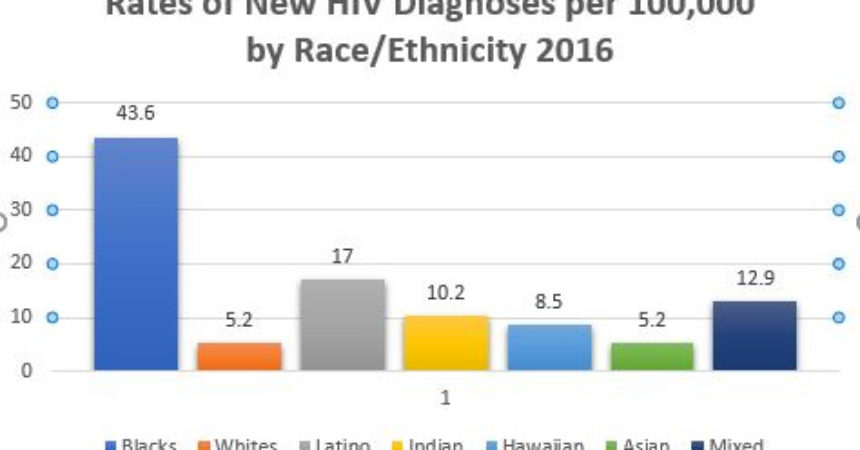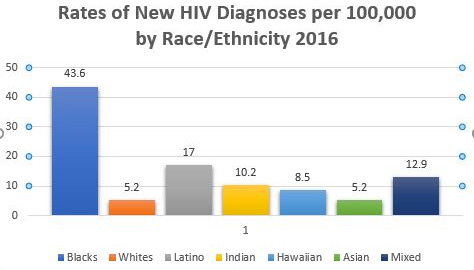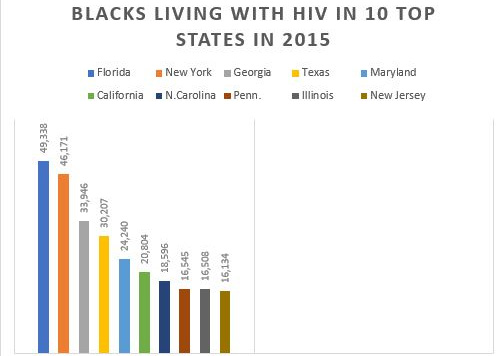
HIV Rates remain high in the Black community
By Frederick H. Lowe
Trice Edney News Wire
National Black HIV/AIDS Awareness Day was Wednesday, Feb. 7, but if you missed the parade that acknowledged the day, you’re not alone because there wasn’t one. There were some panel discussions. But discussions concerning HIV have largely gone silent because many people erroneously believe the disease has been defeated.
Although HIV infections and HIV deaths have declined in recent years, the U.S. Centers for Disease Control estimates that 1.1 million people are currently living with HIV in the U.S. and 470,000 are African-American. This number includes 74,100 individuals who don’t know they are infected and are at higher risk of transmitting the virus.
The disease has continued to cut a deadly swath through the Black community since 1981 when it was first discovered. By U.S. region, the South has the highest rate of recent HIV infections, accounting for the majority of Blacks newly diagnosed with the disease, which was 63 percent in 2016.
HIV/AIDS was the sixth-leading cause of death among Black men 20 to 44 years old and the fourth leading cause of death among Black women 35 to 44 in 2015. There are many reasons why this plague continues to spread almost unabated and almost unnoticed throughout the Black community, but a significant reason is that the disease is not talked about as much as it was years ago. This relative lack of ongoing public discourse about HIV/ AIDS may have given rise to a false sense of safety in the Black community.
The other leading causes of death among Black men are heart disease, cancer, accidents and homicide.
Major reasons for the high rate of HIV infection include poverty, lack of access to health care, higher rates of some other sexually transmitted infections, lack of awareness of HIV status and stigma, stated the Kaiser Family Foundation in its report “Black Americans and HIV/AIDS: The Basics,” published this month.
“Black Americans are disproportionately affected by HIV/AIDS since the epidemic’s beginning,” reported Kaiser Family Foundation. “Although Blacks represent only 12 percent of the U.S. population, they account for 43 percent of HIV diagnoses; 43 percent of people living with HIV and 44 percent of people who have died from HIV, which is a rate greater than that of any other racial or ethnic group.”
The Black community’s lack of knowledge about medicines that control the virus and their reluctance or refusal to take advantage of available treatment options has also contributed to HIV’s spread.
Kaiser published its report years after the introduction of PrEP (pre-exposure prophylaxis, commercially called Truvada), which helps prevent individuals who are HIV-negative from contracting HIV. Although PrEP was introduced five years ago, it is not well known among Blacks.
Gilead Sciences, Inc., which manufactures the only Food Drug Administration-approved form of PrEP, reported the drug’s uptake was low among African-Americans. Between 2012 and 2015, only 10 percent of all new PrEP prescriptions were written for Blacks.
Blacks also did not take the threat of HIV/AIDS seriously, probably because of a lack of information. The late comedian Robin Harris told a joke about Black people wanting AIDS because they believed it was money being given to White gay men who at the time were the largest group suffering from HIV infections. “I want some of that aid,” said Harris,” mimicking a Black man in his comedy routine.
I worked in Philadelphia as a reporter for the Philadelphia Daily News. The Philadelphia Association of Black Journalists sponsored a luncheon on HIV/AIDS. We went to Black gay bars to tell people about the event. A startling number said they would not attend because they did not care if they contracted HIV/AIDS.
A reporter for the Philadelphia Inquirer said she wasn’t going to attend because she did not want to be in the same room with gay men and women. Needless to say, the luncheon was lightly attended.
But one woman who served food at the luncheon said she had heard about HIV/AIDS, but this was the first time it had been explained to her. She thanked the Philadelphia Association of Black Journalists for hosting the event.
There are other reasons why HIV has spread unchecked in the Black community.
Kaiser reports that the course from HIV diagnosis to viral suppression reveals missed opportunities in reaching Blacks.
“While 84 percent of Blacks are diagnosed, 46 percent remain in regular care and 43 percent are virally suppressed. Blacks also may be less likely to sustain viral suppression.” (This occurs when antiretroviral therapy, ART, reduces a person’s viral load, or HIV RNA, reduces the viral load to an undetectable level. Viral suppression does not mean a person is cured; HIV remains in the body, but it is checked).
Meanwhile, HIV is very much here. It’s an ever-present danger and one that’s getting worse though we’re being assured that it is getting better.
In 2015, African-Americans had the highest age-adjusted HIV-death rate — 7.9 per 100,000, compared with 1.1 per 100,000 for Whites.
Newly diagnosed Black gay and bisexual men are younger than their White counterparts, with those aged 13 to 24 accounting for 36 percent of new HIV diagnoses among Black gay and bisexual men in 2016 compared to 15 percent among Whites.









